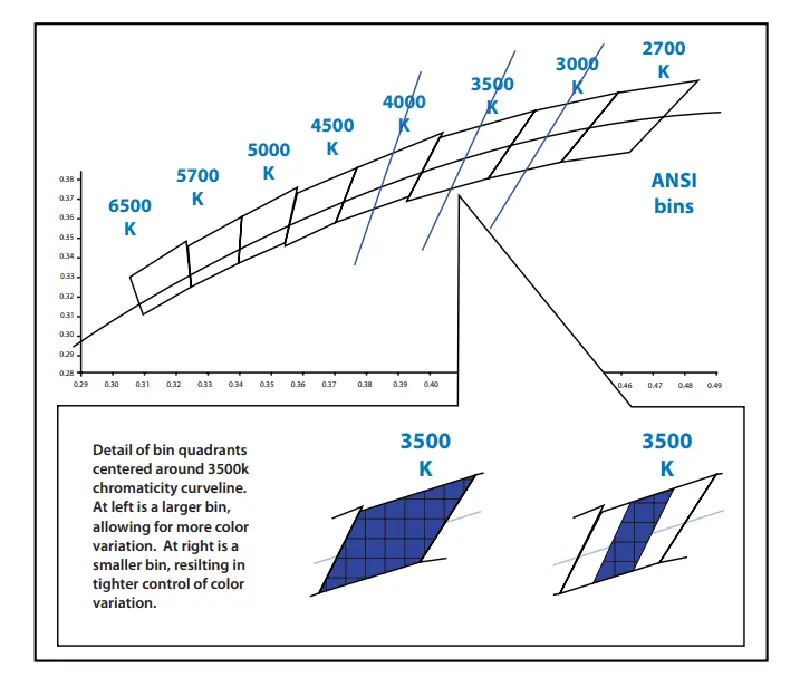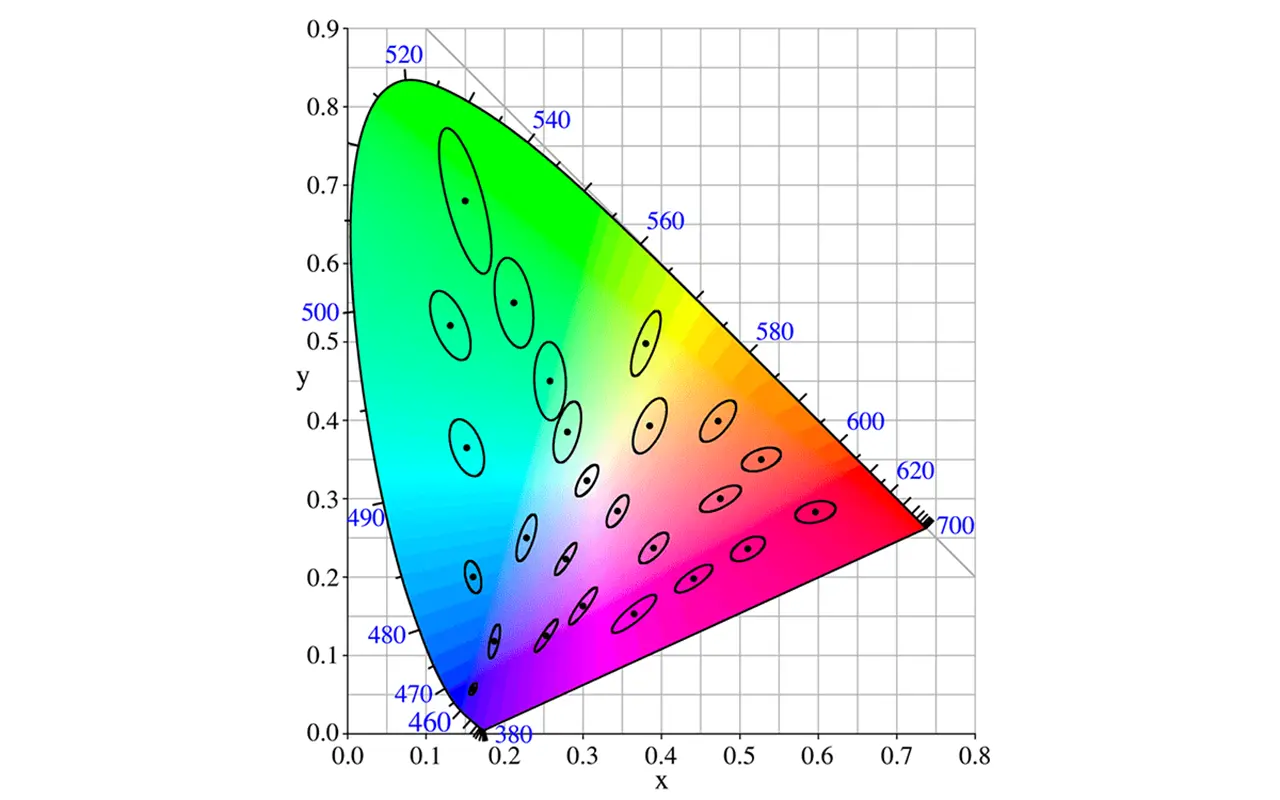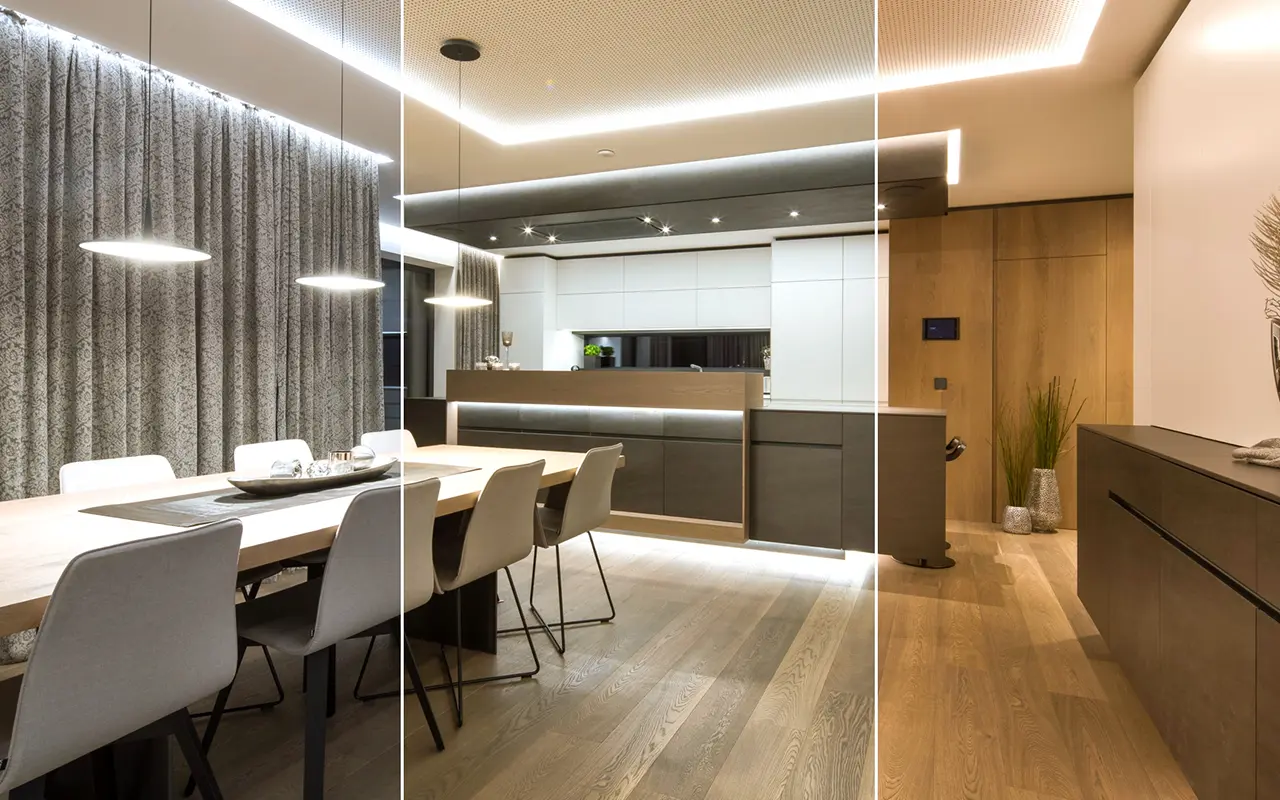Har du nogensinde undret dig over, hvordan alle LED-lamper, du støder på, udstråler en ensartet glød, upåvirket af den uberegnelige natur, der er forbundet med elektronik? Svaret ligger i en omhyggelig proces, der kaldes LED-binning, en helt bag kulisserne, der sikrer, at hver enkelt LED-lampe lyser klart og ensartet, klar til at indtage belysningens verden.
Jeg hedder Tom, og jeg har været en del af LED-branchen siden 2005, og jeg har været vidne til udviklingen af LED-teknologi og den centrale rolle, som LED-binning spiller i den fortælling. Med mange års praktisk erfaring og en dybtgående viden om LED-domænet er jeg her for at belyse nuancerne i LED-binning.
Når vi navigerer rundt i LED-binning i det kommende indhold, vil du opdage videnskaben og kunsten bag sortering af LED'er baseret på farve, lysstyrke og spænding. Fra at forstå nødvendigheden af LED-binning til at udforske processen trin for trin og dykke ned i udfordringerne, er dette blogindlæg designet til at belyse vejen for nysgerrige sind.
Så er du klar til at dykke ned i en verden, hvor videnskab møder kunst og skaber et lysspektakel? Lad os dykke ned i det!
Afmystificering af LED-binning
Definition og forklaring af LED Binning
LED-binning er en omhyggelig øvelse i at sortere og gruppere LED'er baseret på specifikke egenskaber som farve, lysstyrke og lejlighedsvis spænding. Det er en fortælling om præcision, hvor hver LED evalueres og grupperes med sine modstykker, der deler lignende egenskaber. Denne proces er mere end blot sortering; det er en søgen efter ensartethed og kvalitet, der sikrer, at hver enkelt LED leverer en ydelse, der svarer til branchens benchmarks og forbrugernes forventninger. Det handler om at orkestrere en symfoni af lys, hvor hver LED, ligesom en musiker, rammer den rigtige tone og giver en lysende, ensartet og fængslende melodi.
Nødvendigheden af LED-binning for at opretholde ensartethed og kvalitet
LED Binning er ikke bare en proces; det er et løfte om at opretholde standarderne for kvalitet og ensartethed. Det handler om at mindske de naturlige variationer i masseproduktionen og sikre, at det, der skinner igennem, er en sammenhængende aura af lys uden disharmoniske nuancer eller uberegnelig lysstyrke. Det er en bestræbelse på at gøre en atmosfære forudsigelig i sin tiltrækningskraft, hvad enten det er den varme omfavnelse af en hyggelig café eller den livlige summen af et moderne arbejdsområde. Fortællingen om LED binning handler om at opbygge tillid, én LED ad gangen, og sikre, at den spektrale rejse, de tilbyder, er problemfri og pålidelig.klik her for at tilføje din egen tekst
Binning-processens anatomi
Klassificering af LED'er baseret på farve, lysstyrke og spænding
Odysseen med LED-binning begynder med en detaljeret klassificering, en tur ind i hjertet af hver LED for at forstå dens farve, lysstyrke og spænding. Det er en dialog mellem metrik og æstetik, der sikrer, at der opstår en gruppe LED'er, som er klar til at skabe et harmonisk lysspektakel. Processen kan sammenlignes med en omhyggelig koreograf, der sikrer, at hver enkelt kunstner er synkroniseret og klar til at blænde scenen med en sammenhængende og fængslende forestilling.
En oversigt over metoder og teknologier, der udnyttes i LED-binning
Domænet LED binning er udsmykket med en række teknologier og metoder, hver med sin unikke fortælling. Spektrofotometri, et område, hvor lys og stof danser i takt med metrik, spiller en central rolle i evalueringen af LED'ernes spektrale egenskaber. Fortællingen slutter ikke her; visuelle inspektioner og automatiseret binning er de årvågne vogtere, der sikrer, at hver LED kategoriseres med en præcision, der minder om en juvelers omhyggelighed med at evaluere en ædelstens facetter. Det er en rejse i nøjagtighed, der sikrer, at den fortælling om lys, som hver LED er sat til at fortælle, er overbevisende og konsekvent.
Binning-landskabet: Vigtige områder
Landskabet med LED-binning er et mangfoldigt billedtæppe, hvor hvert område har sin egen unikke fortælling. Uanset om det er farvebinning, hvor farvetonen er helten, eller lysstrømsbinning, hvor lysstyrken er i centrum, er hvert domæne en søgen efter perfektion. Fortællingen strækker sig til spændingsbinning og temperaturbinning, områder, hvor LED'ernes temperament og spænding evalueres omhyggeligt for at sikre en pålidelig og spektakulær ydeevne.
Motoren bag LED Binning: Hvordan fungerer det?
At vove sig ind i maskinrummet for LED-binning er som at kigge ind i de omhyggelige forberedelser før et stort orkester. Fortællingen begynder med at sortere LED'erne ud fra spænding og lysstyrke, en detaljeret øvelse, der sikrer, at hver LED er i harmoni med de angivne specifikationer. Rejsen slutter ikke her; det handler om kvalitetskontrol, en årvågen vogter, der sikrer, at hver LED er klar til at levere en præstation, der vil fortrylle publikum med sin konsistens og kvalitet. Det handler om at orkestrere en fortælling om lys, der ikke blot er spektakulær, men også pålidelig, og som sikrer en lysende rejse, der genlyder af essensen af kvalitet og løftet om ensartethed.
Hvorfor skraldespanden holder tøjlerne: Dens nødvendighed
Fortællingen om binning i LED-domænet er et vidnesbyrd om jagten på perfektion. Det handler om at orkestrere et lysspektakel, der ikke bare er visuelt betagende, men som også har en ufravigelig konsistens og kvalitet. Binning er den usynlige maestro, der sikrer, at lysudbyttet fra hver LED er en harmonisk tone i en stor visuel symfoni. Det usynlige arbejde, den omhyggelige sortering og gruppering, sikrer, at LED-lysets verden er et rige af pålidelighed og ensartethed. Uden sorteringsprocessen ville fortællingen om LED'er være præget af uberegnelig lysstyrke og disharmoniske farvenuancer, langt fra den fængslende tiltrækningskraft, den har i dag.
Dykker ned i detaljerne: CIE 1931-diagrammet
Når man begiver sig ud på en rejse for at forstå LED-binning, støder man på kompasset i CIE 1931-diagrammet. Det er en grafisk repræsentation, der overskrider det synlige og dykker ned i farvespektret på en måde, der kvantificerer LED'ernes visuelle tiltrækningskraft. Diagrammet er det leksikon, hvorigennem fortællingen om farverepræsentation i LED-binning formuleres. Det fastlægger koordinaterne og spillereglerne og sikrer, at farvernes dans i LED-domænet er præcision, konsistens og tiltrækningskraft. Gennem linsen på CIE 1931-diagrammet udfolder fortællingen om farver i LED-binning sig og repræsenterer et niveau af raffinement og nøjagtighed, der er afgørende i LED-industrien.
| SDCM | Synlighed |
|---|---|
| 1 | Næsten umuligt at se en forskel |
| 2 | Forskelle set gennem måleinstrumenter |
| 3 | Mindre synlige farveforskelle |
| 4 | Synlige farveforskelle |
| 5 | Tydelige farveforskelle |
Farvernes dans: LED Binning med MacAdam Ellipses
Fortællingen om MacAdam Ellipses inden for LED-binning kan sammenlignes med rytmen i en dans. Det er rammerne, der dikterer farvevariationerne og sikrer synkronitet og harmoni i lysudbyttet. MacAdam Ellipses handler om subtiliteterne, de små farvevariationer, der kan gøre forskellen mellem en fængslende visuel oplevelse og en almindelig. De er koreograferne, der sikrer, at LED'ernes farvepræstationer er en hypnotiserende dans. Dette skuespil efterlader et uudsletteligt aftryk på det visuelle lærred.
De mange fordele ved LED-binning
Forbedret farvekonsistens
Stræben efter farvekonsistens i LED-binning er en fortælling om visuel harmoni. Det handler om at sikre, at den farve, der bader dit rum, er stabil, uden flimmer eller uventede skift i nuance. Det er en stræben, der gør, at uanset om du soler dig i den varme glød fra en sengelampe eller det levende lys fra en lysekrone, så forbliver farven ægte, hvilket forbedrer LED-produkternes æstetiske appel og pålidelighed.
Stigning i effektivitet
Effektivitet er den melodi, der runger gennem processen med LED-binning. Det handler om at orkestrere en forestilling, hvor hver LED er en tone, der rammer den rigtige akkord med hensyn til lysstyrke og energiforbrug. Processen sikrer, at LED'erne ikke bare er lysende vidundere, men også udtryk for energieffektivitet. Denne fortælling er i stigende grad afgørende i en verden, der læner sig op ad bæredygtige løsninger.
Beherskelse af kvalitetskontrol
Kvalitetskontrol i LED-binning er den sidste handling, der sikrer, at hver LED er en performer, der er klar til at fortrylle med sit lysende output. Den omhyggelige inspektion og finjustering sikrer, at hver LED er fri for fejl, der kan ødelægge dens ydeevne eller levetid. Det handler om at sikre, at det, der når frem til forbrugeren, er intet mindre end perfektion, en fortælling om pålidelighed og kvalitet.
Udforskning af typerne af LED-binning
Spektret af LED-binning er en fortælling om mangfoldighed, hvor hver type har sin egen unikke essens og betydning.
Binning af farver
I fortællingen om LED-binning er Color Binning kunstneren, der sikrer, at farvepaletten fra LED'erne er ensartet og harmonisk. Det handler om at skabe en visuel fortælling, der er behagelig for øjet, og sikre, at nuancerne er synkroniserede, uanset om det er den varme ravfarve i en hyggelig café eller den kølige hvide farve i et moderne kontor.
Lysstrøm Binning
Luminous Flux Binning er maestroen, der orkestrerer lysstyrken i LED'er og sikrer, at hver diode skinner med en glans, der er både ensartet og fascinerende. Det handler ikke kun om at oplyse et rum; det handler om at give lysstyrke som en fortælling om kvalitet og pålidelighed.
Binning af spænding
Voltage Binning i LED-domænet svarer til at stemme instrumenterne før et stort orkester. Det handler om at sikre, at hver LED fungerer inden for et bestemt spændingsområde, en fortælling om sikkerhed og effektivitet sammenflettet med lysende ydeevne.
Binning af temperatur
Temperature Binning er fortællingen om at forstå LED'ers temperament og kategorisere dem ud fra det temperaturområde, hvor de lyser klarest. Det handler om at sikre, at LED'ernes ydeevne er optimeret, så de passer til de forskellige miljøer, de skal belyse.
Trin for trin: Processen med LED-binning
Fortællingen om LED-binning udfolder sig minutiøst, og hvert trin er koreograferet for at opnå den højeste kvalitet og ensartethed.
Trin 1: Sortering af lysdioder efter spænding og lysstyrke
Prologen til LED-binning er en omhyggelig audition, hvor LED'er evalueres ud fra deres spænding og lysstyrke. Dette er smeltediglen, hvor råmaterialet vurderes, og hver enkelt LED's ydeevne undersøges nøje for at sikre, at den er egnet til de efterfølgende faser. Det handler ikke kun om at måle spænding og lysstyrke; det handler om at sørge for, at hver enkelt LED er klar til den omhyggelige proces og har de nødvendige parametre til at gå videre til næste fase.
Trin 2: Skæring af halvlederen i die'er
Som fortællingen skrider frem, er udskæringen af halvlederen til en die et centralt kapitel. Denne præcise operation lægger fundamentet for LED'erne, idet den udskærer individuelle dies, som nu er klar til at blive orkestreret til en lysende symfoni. Præcisionen her handler ikke kun om nøjagtig udskæring; det handler om at sætte scenen for de enkelte LED'er, så de kan skinne, og hver die er en hovedperson i fortællingen om LED-binning.
Trin 3: Kabelbindere og elektriske forbindelser
At etablere robuste elektriske forbindelser svarer til at skrive en dialog mellem LED'en og dens strømkilde. Det handler om at skabe et bånd, der sikrer et problemfrit flow af elektricitet og orkestrerer en uafbrudt og fejlfri præstation. Ledningsforbindelserne er de kanaler, der sørger for, at fortællingen om lyset udfolder sig problemfrit, og hver LED udtrykker veltalende sin lysende historie.
Trin 4: LED-binning
Kernen i fortællingen er LED-binning, en omhyggelig proces, hvor LED'er kategoriseres ud fra forskellige parametre. Det handler om at orkestrere et harmonisk kollektiv i dets farve og lysstyrke, og hver LED er en harmonisk tone i dette lysende ensemble. Binning er ikke bare en proces; den omhyggelige koreografi sikrer, at det kollektive lysoutput er et skue af konsistens og kvalitet.
Trin 5: LED-kvalitetskontrol
Tæppefald i LED binning-sagaen er streng kvalitetskontrol. Denne finale sikrer, at hver LED er klar til at blænde markedet. Det er det sidste kontrolpunkt, den endelige gennemgang, der sikrer, at hver enkelt LED har den højeste kvalitet og er klar til at fortrylle publikum med sin lysende glans.
Afdækning af forskellen: Farve-binning vs. flux-binning
Fortællingen om Color og Flux Binning er en fortælling om to forskellige, men sammenflettede domæner. Mens Color Binning orkestrerer nuancen, koreograferer Flux Binning gløden, hver en unik dans, der sikrer, at LED-produktet blander æstetisk tiltrækningskraft og funktionel ekspertise.
Faktorer på bordet: Overvejelser i forbindelse med LED-binning
Sagaen om LED-binning er en nuanceret koreografi med utallige faktorer, der orkestrerer rytmen.
Kriterier for skraldespand
Kriterierne for binning er som manuskriptet til et teaterstykke, der styrer processen og sikrer, at hver LED kategoriseres med en ufravigelig præcision. Det handler om at skabe en fortælling, hvor hver LED placeres i sin rette kategori og er klar til at spille sin rolle i det store lysspektakel.
Teknologiske overvejelser
I det store teater for LED-binning er teknologien instruktøren, der sikrer, at hver akt udføres med en finesse, der afspejler raffinementet i en Broadway-produktion. Den anvendte teknologi er rygraden, der orkestrerer en proces, der er nøjagtig, effektiv og eksemplarisk i forhold til at opnå den ønskede kvalitet og ensartethed.
Overholdelse af industristandarder for LED-binning
Industristandarder er benchmarks, guldstandarder, der sikrer, at fortællingen om LED-binning er en fortælling om professionalisme og ekspertise. Overholdelse af disse standarder er ikke til forhandling og sikrer, at processen med LED-binning udføres med uovertruffen stringens og kvalitet.
Navigering i miljøbestemmelser for LED-binning
I fortællingen om LED-binning er overholdelse af miljøbestemmelser et kapitel, der understreger ansvarlighed og bæredygtighed. Det handler om at sikre, at processen ikke kun handler om at opnå lysende ekspertise, men også om at gøre det på en økologisk ansvarlig og bæredygtig måde.
Følelse af varme: Termiske effekter af LED-binning
Temperatur er ikke bare et mål for varme; det er en variabel, der har stor indflydelse på LED-binning-processen. Den kan sammenlignes med en lunefuld danser, hvis bevægelse, selvom den er smuk, kan ændre rytmen i LED-binning-ensemblet. At forstå de termiske effekter, afbøde de potentielle termiske uoverensstemmelser og sikre, at LED'erne kan fungere optimalt på tværs af et spektrum af temperaturforhold, er afgørende for, at LED-binning bliver en succes.
At navigere gennem forhindringerne: Almindelige problemer med LED-binning
At begive sig ud i LED-binning er som at navigere i en labyrint med en del udfordringer. Disse forhindringer, der spænder fra opretholdelse af farvekonsistens til sikring af de elektriske forbindelsers robusthed, er de smeltedigler, der tester effektiviteten af LED-binning-processen. At identificere disse udfordringer, udtænke strategier til at navigere i dem og sikre problemfri sejlads gennem binning-processen afspejler den innovation og modstandsdygtighed, der ligger i dette domæne.
Probing the Light: Hvordan tester man en Binned LED?
Evaluering af en LED er ikke blot en teknisk proces, men en omhyggelig prøve, der sikrer, at den er klar til sin rolle i det store lysende teater. Det handler om at teste farve, lysstyrke og spænding for at sikre, at LED'en er klar til at blænde med sin ensartede og pålidelige ydeevne. Hver test er et skridt i retning af at sikre, at LED'en er klar til at optræde og fortrylle med sin lysende glans.
Tips til at forfine din LED-binning-proces
Bestræbelserne på at forfine LED-binning-processen er en stræben efter lysende ekspertise. Det handler om at finpudse teknikken, forbedre den anvendte teknologi og sikre, at ensemblet af kuraterede LED'er er intet mindre end spektakulært. Det handler om at tage innovationer til sig, lære af udfordringerne og hele tiden stræbe efter at løfte LED-binning-processen til højere præcision og konsistens.
Brændende spørgsmål: Ofte stillede spørgsmål
Hvad er LED Bin Codes egentlig?
LED Bin Codes er identifikatorer, der tildeles grupper af LED'er under binning-processen. Disse koder giver oplysninger om LED'ernes specifikke egenskaber, såsom farve, lysstyrke og nogle gange spænding. Ved hjælp af disse bin-koder kan producenter og forbrugere nemt se LED'ernes kvalitet og specifikationer og sikre, at de opfylder kravene til den påtænkte anvendelse. De fungerer som et pas, der giver et glimt af LED'ernes iboende egenskaber og dermed forenkler udvælgelses- og kvalitetssikringsprocessen.
Findes der etablerede industristandarder for LED-binning?
Ja, der findes industristandarder for LED-binning, som er fastsat for at sikre konsistens, kvalitet og pålidelighed i LED-produkter. Disse standarder dikterer de acceptable tolerancer i farve, lysstyrke og andre parametre, hvilket sikrer, at LED'erne lever op til forventningerne og kravene i forskellige applikationer. Overholdelse af disse standarder hjælper også med at opretholde ensartethed og udskiftelighed mellem LED-produkter fra forskellige producenter.
Er det muligt at foretage LED-binning i produktionsfasen?
LED-binning er en integreret del af fremstillingsprocessen. Den udføres efter den første produktion af LED'er, men før de samles til færdige produkter. Selv om det er en del af den bredere produktionsfase, er det et særskilt trin, der sikrer kategorisering af LED'er baseret på deres egenskaber. Denne adskillelse hjælper med at opretholde kvalitetskontrol og sikre, at de endelige LED-produkter opfylder de ønskede specifikationer.
Hvordan bidrager binning til farvekonsistensen i LED-lys?
Binning er medvirkende til at sikre farvekonsistens blandt LED-lys. LED'er grupperes blandt andet på baggrund af deres farveoutput under binning-processen. Denne proces sikrer, at alle LED'er inden for en bestemt bin har lignende farveegenskaber, hvilket garanterer et ensartet farveoutput, når de bruges i belysningsprodukter. Det udrydder risikoen for farveforskelle, hvilket er afgørende for applikationer, hvor ensartethed i farverne er et afgørende krav.
Er LED binning-processen nødvendig for alle LED-lysvarianter?
Nødvendigheden af LED-binning afhænger i høj grad af anvendelsen og de krævede kvalitetsstandarder. LED-binning er uundværlig for belysningsløsninger af høj kvalitet, især hvor farvekonsistens og lysstyrke er afgørende. LED-binning kan dog være mindre vigtigt for mindre kritiske anvendelser eller produkter, hvor mindre afvigelser i farve eller lysstyrke er acceptable. Det er den ønskede kvalitet og applikationskravene, der dikterer nødvendigheden af LED-binning.
Hvad er de typiske binning-tolerancer i LED-lys?
Binning-tolerancer henviser til de tilladte variationer i LED'ernes egenskaber inden for en bin. Almindelige tolerancer omfatter variationer i farve, lysstyrke og spænding. De nøjagtige tolerancer kan variere afhængigt af producentens standarder og applikationens specifikke krav. Snævrere tolerancer er dog ofte ensbetydende med højere kvalitet, da de sikrer en større ensartethed i LED'ens ydeevne.
Er der nogen potentielle ulemper ved LED-binning-processen?
Selv om LED-binning er afgørende for at sikre kvalitet og ensartethed, kan det også bidrage til de samlede omkostninger og den tid, der kræves for at fremstille LED-produkter. Processen kræver ekstra udstyr, arbejdskraft og tid til nøjagtig sortering og opbevaring af LED'erne. Men fordelene ved forbedret kvalitet, ensartethed og opfyldelse af applikationskravene opvejer ofte de dermed forbundne ulemper.
Hvordan påvirker binning dæmpningsmulighederne for LED-lys?
Binning-processen kan påvirke LED-lysets dæmpningsevne. LED'er, der er inddelt til lignende spændings- og lysstyrkeniveauer, vil sandsynligvis udvise en ensartet dæmpningsevne. På den anden side kan LED'er med betydelige afvigelser i disse parametre udvise inkonsekvent dæmpningsadfærd. Derfor er binning-processen afgørende for at sikre, at LED'er i et produkt eller system giver ensartet lysdæmpning, hvilket bidrager til den overordnede kvalitet og brugeroplevelse.
Hvad er relevansen af CIE 1931-diagrammet i LED-binning?
CIE 1931-diagrammet spiller en afgørende rolle i LED-binning ved at fungere som en videnskabelig ramme for farvegengivelse. Inden for LED-industrien er farvekonsistens afgørende for kvaliteten, og CIE 1931-farverummet giver en standardiseret metode til at definere og måle farver. X- og y-koordinaterne på CIE-diagrammet repræsenterer kromaticitet, som er farvekvaliteten uanset lysstyrke. Når det drejer sig om LED-binning, er det vigtigt at forstå LED'ernes farvekoordinater for at sikre, at de opfylder de ønskede standarder for farvekonsistens og kvalitet. CIE 1931-diagrammet fungerer som en køreplan, der styrer binning-processen mod at opnå et harmonisk farveoutput blandt en gruppe LED'er og sikrer, at farveopfattelsen forbliver ensartet på tværs af forskellige LED-produkter. Ved at overholde de standarder, der er fastsat i CIE 1931-diagrammet, kan producenterne effektivt samle LED'er for at opfylde specifikke farvekrav, hvilket gør det til et uundværligt værktøj i LED-binning-processen.
Hvordan indgår temperatur-binning i LED-binning-processen?
Temperatur-binning er et nuanceret, men vigtigt aspekt af LED-binning-processen. Hver LED har et bestemt temperaturområde, inden for hvilket den fungerer optimalt. Temperatur-binning indebærer kategorisering af LED'er baseret på deres temperaturegenskaber, hvilket sikrer, at de fungerer effektivt under forskellige miljøforhold. Denne proces er afgørende, da den hjælper med at afbøde de termiske effekter, der kan påvirke LED'ernes ydeevne og levetid. Ved at forstå og kategorisere LED'er ud fra deres temperaturegenskaber kan producenterne sikre, at LED'erne er velegnede til de tiltænkte anvendelser, uanset om de skal bruges under varme, kolde eller tempererede forhold. Temperatur-binning tilføjer således endnu et lag af præcision til LED-binning-processen og sikrer, at LED'erne ikke kun lyser klart, men også forbliver modstandsdygtige og effektive under varierende temperaturforhold. Gennem temperaturbinning kan producenterne give mere præcise specifikationer og garantier for, hvordan LED'er fungerer under forskellige temperaturscenarier. Det gør det til et uvurderligt aspekt af LED-binning-processen.
Konklusion
Odysséen gennem LED-binning belyser den omhyggelige koreografi og præcision, der kulminerer i skabelsen af et LED-produkt. Det er en oplysende rejse, der opfordrer nysgerrige sind til at dykke dybere ned, svælge i lysets symfoni omkring os og sætte pris på den lysende melodi, der lyser vores verden op. LED-binning er ikke bare et teknisk område; det er en strålende saga, der spiller en afgørende rolle i orkestreringen af det lysspektakel, vi ofte tager for givet.
Når man dykker ned i den omhyggelige proces med LED-binning, afsløres essensen af kvalitet og ensartethed, som danner grundlaget for LED-industrien. Når du belyser din forståelse, så lad Unitopen af Kinas førende LED lysbånd og LED neon flex producenter, gør dit perspektiv endnu lysere. Med en arv af ekspertise inviterer vi til forespørgsler og er her for at imødekomme dine LED-behov. Ræk hånden ud til Unitop, og lad os lyse en lysere fremtid op sammen.

Tom er nu salgschef for Unitop (Kina) Co, Limited. Han har været i LED-belysning industrien lige siden 2005. Han er ekspert i salg og marketing samt fabriksledelse. Han kan lide bodybuilding, og han er også en vild Apple-fan! Han er en hårdtarbejdende fyr og elsker at lære og prøve nye ting.
E-mail: tom@unitopledstrip.com WhatsApp: +86-18680307140







Skriv en kommentar
Vil du deltage i diskussionen?Du er velkommen til at bidrage!